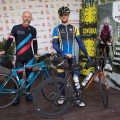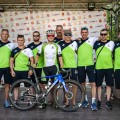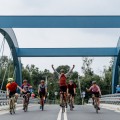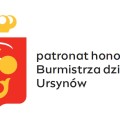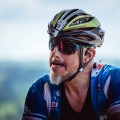Transcription of the radio interview for TurDeTur Weszlo.fm
Reading time: about 25 minutes
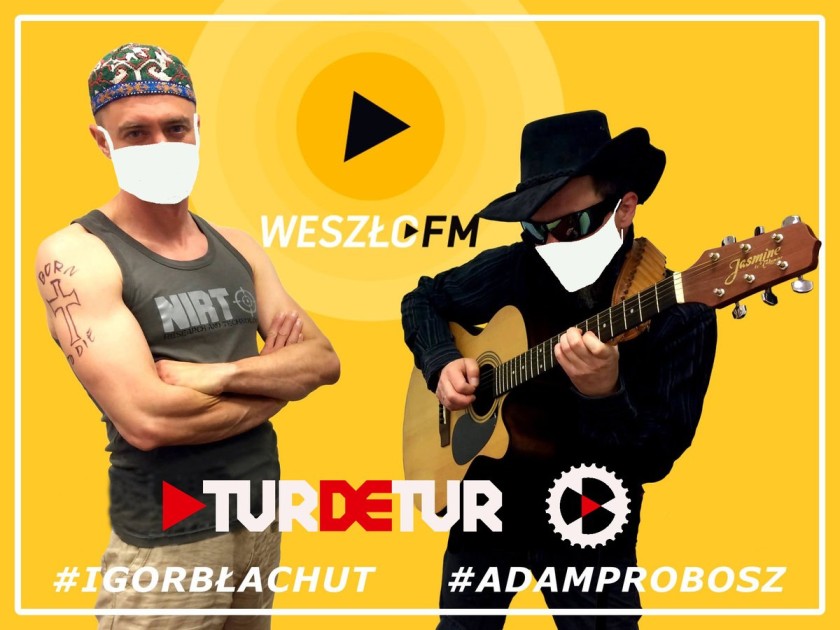
INTERVIEW OF IGOR BŁACHUT WITH REMEK SIUDZIŃSKI, CO-ORGANIZER OF RACE AROUND POLAND
WESZLO.FM – TURDETUR
[transcription]
IGOR BŁACHUT: Remek Siudziński is now our guest. Remek, good evening as we are recording it tonight. I understand that homework with children is already managed?
REMEK SIUDZIŃSKI: Good evening. I warmly welcome. Yes, there are times when everything is happening at home. Everything is happening online. Help in education for children lasts in the evenings. But now I'm ready for interview...
IB: Well, I hope you did even better than the ladies in the educational program, which has recently gained tremendous popularity at an alarming rate. Although I do not know if they are satisfied with this kind of popularity 😉. Well, by the way. Remek, tell me ... I'm extremely curious ... how do you feel sitting at home?
RS: Well, listen ... the situation is dynamic. Every few days there are new tightenings. In fact, now is the moment that I'm almost only sitting at home, except for going for a walk. Until recently, I rode outside because it was legal and fair. I will not infect anyone riding solo. Although I was worried when I saw that two colleagues who are living in separate apartments, are going to training. I would not make such a move. In general, well, you have to comply with the regulations that are being introduced. It's a bit like in a war. We must be disciplined to be able to return to normal situation as soon as possible. I try not to think about it too much. I just try organize my life and training in conditions we have. So, for today, the trainer remains.
IB: Yes, but for those who do not fully comprehend the subject, I will say that in your case going out for training is not going out for 40 minutes of spinning, but definitely a longer time. Training that count in hours. Every day. So, how does your body react to such a change, because this is in my opinion the biggest problem, probably for a man who spends half of his life outdoors.
RS: It is not right now that I train several hours a day. Since I started working with a new coach, the trainings are more intense, but shorter. The old school talked about going long, less intense workouts and building a base in winter. The new coaching approach says something different. Especially for amateurs who, in addition to cycling passion, have professional and family life. It's also not true, that amateurs can always afford to go to warm countries and made long distances. It is a little reversed at the moment. During the winter, more intense workouts are done, but shorter. It just favors the situation as it is. On the other hand, I already had such experiences that I sat forty hours on a trainer with a two-hour sleep break. But I can't do it every week. So sitting at home is a limitation. Now the situation is so cool that it is Zwift and training on the trainer are not so monotonous. A few years ago, cyclists often were saying that the hour on the trainer is enough and then it comes terrible boredom. Nowadays there are more and more people who go for 100km+ Zwift events or ride alone and break their records. Now you can see that the situation is difficult for both amateur and professional cycling, so Zwift has its 5 minutes or maybe even 5 months.
IB: What you say, the trainer manufacturers' lobby is responsible for all the confusion 😉 The main beneficiary of this.
RS: Recently, two people called me, asking where to get the trainer because stocks in large stores have run out or large stores are closed. I don't know about smaller bicycle stores, but the fact is there are problems with accessibility. There are also problems with Zwift servers, which had to reduce the quality of graphics. It is certainly interesting ... or uninteresting, it depends on how you look at it.
IB: Interesting - like in the Chinese proverb about interesting times in which you blame someone to live, if you don't like them too much. Undoubtedly, we have some interesting times and there is something in common with China. Okay, but you say the worouts are short but more intensive. Is it an hour or two?
RS: Yes, just between one and two hours. Until now, I was planning also outside weekend training sessions of several hours. At the moment it is questionable. In my situation, when I am not a professional cyclist, the current legal interpretation (I have a colleague lawyer with whom we organize Race Around Poland) does not allow me to ride on the road. Mateusz has just published an article on our race website. What can and cannot be done after legal analysis. It concerns a period between 1 and 11 of April. In short, the amateur cyclists have to sit at home. It looks like this.
IB: If he has a trainer, if he has a Zwift, he's lucky. If not, this is where the problem arises as to what to do to avoid exploding from stillness.
RS: Well, you're raising an interesting issue. One thing is that you have to train to either maintain or improve your physical condition. At the moment our authorities have banned it. However, I would encourage you to leave your home for health purposes from time to time. Not only for physical health, but also for your brain. For example, I practice evening walks. I’m doing two kilometers in the evening when no one is on the street. I go out and walk - for my health, to get some air, to ventilate my head, to rest my mind.
IB: I encourage you too, because I think it would be quite difficult without it. One thing is how to stand up at home, but on the other hand, that's what we talked about before. Cyclists or amateurs are unhappy, because they can't train. But the thing is that there is not much to train for. In the near future all events are cancelled or moved, let's say, to July or August. But those are fiery hopes. For now.
RS: That's right. There's a problem with motivation. What if we have specific workouts planned by the coach. I'm also writing out training sessions for my athletes. It starts with the fact that we plan the whole year. There are several "A" races. They are permanently placed in the calendar. For these races, there are consecutive mesocycles, microcycles. In this way, each training is started with a race in mind, which is on a specific date. I have my main race this year in early September, so maybe it's not so bad. But I use to have the race planned for the end of April. He's already postponed. I also used to have the race scheduled in May. It is also postponed. Now I'm thinking about the race in early June, but, like you said, it could be difficult. We'll see... Although in this whole unknown and in the pessimistic moods we are in, we also have to look a little optimistic. From the point of view of a human being or an amateur cyclist, we have to build our healthy thinking on something in order not to fall into total pessimism. There are countries in the world where the epidemic is retreating. There are countries where the epidemic has stabilized. In Italy the number of cases is high, but stable, if I could say so. I hope that in Poland we won't come to such high figures as in Italy, but that the epidemic will also retire from our and not only our country. At least I predict that, but it may be different.
IB: In your (I'm talking about ultracyclists) calendars a few important events have certainly come out this season. Do you think that there is a chance that ad-hoc events will be organized to fill the place in the second half of this year?
RS: I don't think so. It's because the second half of the year is already very busy because some of the races planned for the first half of the year have been cancelled. So they are not going to happen this year, but they are going to happen next year. And some of the races are being postponed until the fall and already have specific dates. Someone moved the race to July, someone moved to September. Creating new ultra races in the autumn of this year does not make much sense, because it will be dense in the calendar anyway. The more so because you have to be aware that the calendar cannot be too dense, because a participant cannot go several ultra races in a row. She/he must recover between one event and another for four weeks.
IB: You're anticipating my next question. There is such a fear that these less experienced players will be rested in the middle of the year, without starts and (in most of the season) without training outside. Once they are "off the leash", they will not be able to limit themselves in terms of the number of starts. They will want to do it again and again...
RS: It can be so in some cases. However, if we're talking about ultra-amateurs, you have to be aware that they have to reserve time in order to go to such a race. Get a vacation, etc. So it may not be easy for reasons other than sports. It won't be that a man like that will take many days off in the fall to take participation in ultraraces. Additionally in the case of ultra races (more than in the case of shorter events) there is a certain limit in the calendar, after which it's hard to organize such races. The farther in autumn, the closer to winter, the less encouraging the temperature is. As far as Polish ultra races are concerned, the season ends in mid-September. Now I predict that this year the season will end 2 weeks later. Although there are some riders who can also ride ultra in winter…
IB: Yes, they ride… For example there is "Ruska" in Finland, I don't remember when, but anyway, it happens in the snow.
RS: Yes, but the number o athletes in such competitions are probably limited in comparison to summer events.
IB: Okay, well, since we've already talked about what's going to happen this season and next year, say two words about this party where you'll be standing on the other side. So as an organizer.
RS: Yes. This is quite a fresh project. In concrete terms, because it has been on my mind for several years. To organize an event like Race Across America or Race Around Austria. To bring to Poland ultracyclists from abroad, who are racing mainly in support races or relay races. To show them our beautiful country. To show them that it is possible to lead the route on road of good quality, that there are 24/7 petrol stations on the way. On the way there are points where you can buy and fill up with fuel and isotonic drinks. My friend, Mateusz, and I came up with an idea to organize Race Around Poland. Just like Race Around Austria. The race around Poland, because on this route you can determine the biggest kilometer. A few days ago, exactly on Monday, we started with this project. The registration has been opend. This race connects two worlds. Two concepts. One, it is based on Race Across America, a race that has been held since 1982. It's an event for solo racers and a relay race with support. On the other hand, we wanted to join this world with the concept of non-supported racing, which is now developing very dynamically. There are many interesting events of this type in the world - TransAmBikeRace or Transcontinental. Even i Poland there are a dozen or so such races without support over a distance of at least 500km. In Race Around Poland you can start in the category with or without support. We have also an innovation. There is no such formula in the world. The point is to take into account that when you start, you do not know properly what distance you will cover. We will help you to establish your maximum in this area. Maybe you will drive the whole 3600 km around Poland or maybe you will drive 300, 600 or 900 and say at some checkpoint: "Enough, enough for this year. I'll come back next year and go 300 kilometres further“. In this formula we also have the organizer's support car, which will support such competitors when they reach the finish line with the rest of their strength. Then they will be able to use the drink, the food, the support, the help to get transport to home, or to arrange accomodation for a night or a shower. I, like you say, will be on the other side this time. I'll be in this technical car to support athletes fighting against time limit.
IB: Listen... is this a concept that assumes that the route is strictly defined?
RS: Yes, the route is mapped out. You can go to racearoundpoland.pl and in "Route" menu you can see how it looks exactly. Of course the route is not in a final version. The race will take place in July 2021. There is still a lot to change in terms of road conditions. There may be some roadworks and detours. Shortly before the race itself we will make a reconnaissance of the whole route. We want to eliminate any inconvenience and do it the best we can. We want there to be as few navigation problems as possible. We already get a lot of messages from people who live by the route. They tell us that, for example, "You can't cross this bridge because it’s forbidden for bicycles, maybe it's better to lead it differently..." Before we go round the route finally, it's good that we have such a help from the people concerned.
IB: I still have a question about the formula itself. It may be that someone will not be able to do it. However, he will want to go further, even though he falls asleep and throws him on his bike from right to left. And that would be dangerous. Are there limits on points? Is there any other procedure concerning possible withdrawal of a competitor itself or withdrawal of a competitor by the organizer.
RS: Yes. You raised two important issues. One is how the classification will look like. What do the limits look like? Checkpoints are on average every 300 kilometers. They're designated in cities. They'll mainly be hotels where you can stay and take shower. At each of these points there will be a time limit, which is determined by the formula "300 kilometers per day". You have to get to the first checkpoint within 24 hours, to the second - within 48, to the third - within 72... Of course, at the beginning it will be easier because the start and finish line is in Warsaw, so at the beginning we're going along a fairly flat route. It will be more interesting in the mountains. In the Podhale or Tatra Mountains the route is marked out in such a way that there will be as many elevation as possible. We want to show the competitors, especially from abroad, that we have interesting climbs and beautiful views of the Tatras. I was inspired by the UCI World Tour race – Tour de Pologne, which discovers many new roads and climbs. We want to move the amateur riders into the world of professional cycling. So that they can feel their hearts beat faster when they climb to Gliczarów and see the inscriptions with white paint on the asphalt. This is the first thing. Checkpoints and time limits that are approximately 300 kilometers a day. The second thing is safety. This is very important. It's in the regulations and in our rules. If a competitor's behavior indicates that he's so tired, that he can threaten his safety, we can help him with the support car. However, if we see that further racing is associated with too much risk, then we will have to take such a racer off the track. We also have a lot of regulations concerning safety itself. This is an event, where on the route there are cars besides the cyclists. They take part in the traffic. That's why we have strictly defined regulations concerning the cyclist supporting with cars and support crews. Including penalties for non-compliance with road traffic regulations and for blocking traffic. Imagine a rider in a supported formula. He is followed by a van and there is also RV going somewhere. The team must not to block the traffic. The whole event takes place in open traffic.
IB: As far as the supported riders are concerned, the team members have to follow the rules and look at the regulations in order not to mess up. This is quite clear to me. However, I wonder how logistically you would like to deal with such cases of extreme fatigue, mainly mental, because physical fatigue remains constant after two or three days. At this point more will power and the mind, I think it starts to play a role. What to do with such racers who do not cycle at all from behind „the peloton“? They will not be close to your car, which will follow the last cyclists. They will, for example, be 400 kilometers ahead and there will suddenly come a crisis where the guys will start sweeping from right to left. What then? How would you like to deal with such a case?
RS: First of all we have checkpoints every 300 kilometres. At the checkpoints we have our crew, who can evaluate what the athlete looks like and tell him, for example, that he should get some sleep before next „stage“ of the race. This is one thing. On the other hand, like in Race Around Austria or Race Across America, we'll have „secret cars“ that will run on the track and follow the riders. For example, in Race Around Austria it's not the referees who drive on the track, but the observers. In neutral, unmarked cars. They will record various cases...
IB: So, like the police in civilian cars?
RS: You could say that. But we treat it as taking care of the safety of the participants.
IB: I understand that each of the participants of the solo or relay race will be equipped with a transmitter that will keep you informed about where he is and how fast he is moving?
RS: Yes. Exactly. The race will be monitored. First of all, for security reasons, so that we know where who is at the moment. So that, while sitting in the organizer's support car, we know that are close to a racer that we have to take or support. On the other hand, so that the family can see him. At such races, this is a huge support. Friends, supporters, family members are still watching. When somebody loses his way, the watchers call him to get back on the track. If someone stops at one point for a longer time, then "the whole world" wonders what happened and if everything is okay. That's the kind of monitoring that will happen. It's essential. Also from the point of view of the attractiveness of the event. It is known that this is not an ordinary cycling race, where a TV broadcast is being held and everything is visible from helicopters and motorcycles. Here the biggest attraction is following the "dots" on the map. It is called "dotwatching". All over the world there are fans who are tracking days and nights, how the dots move. What's the situation? People comment on it on the Internet. They throw in statistics. Who slept how much? Who's been going how much time? At what speed? Who has what strategy? There's all the fun in tracking it. That was the first thing we started to manage. In this area we have chosen the technical solution best suited to our race
IB: I wonder if that's my friend's company, by any chance, but I'll check it out 😉 If you could recall... Because I assume that not everyone has managed to get into Race Across…. during our conversation...
RS: Around, Around!
IB: Excuse me. Race Around Poland. RaceAroundPoland.pl Not everyone has yet seen everything on this website. Could you give us some characteristic points on the route? You said that the beginning - Warsaw, the end - Warsaw. We more or less know where it is 😉. But, what direction from Warsaw?
RS: The honorary start is still an open question, but the sharp start will take place on Gassy, well known to us. We are still flying south through Góra Kalwaria...
IB: For listeners outside the Warsaw-Mazovian region: Gassy - the most cult place for local road cyclists.
RS: Yes. I think it is a very good place to start. It reminds me a bit of a start to Race Across America, where at the beginning the route leads even along a bicycle path. The support cars don't follow the cyclists there yet. There is no need for that. They join later. You cycle on a quiet narrow road. No heavy traffic. It's the same in Race Around Poland. Gassy is a great place. Then we cross the Vistula River in Góra Kalwaria. We go to Parczew and there is the first checkpoint in Hrubieszów. About 300 km from the start. On the Ukrainian border.
IB: And the hills start, because it is Roztocze.
RS: Here are already small hills. Then Przemyśl. Then the uphill to Arłamów. This is the first mountain. Then Bieszczady. Ustrzyki Górne. It'll be beautiful here too. Then we go to the Low Beskids, the Beskids in general... And the Tatras. Harnaś uphill, near Białka Tatrzańska. There will be a nice place and a checkpoint. Gliczarów, of course. Then to the west. The Vistula city, Istebna, the triple border. The Presidential Castle...
IB: Krowiarki pass on the way?
RS: Krowiarki will necessarily be on the way. Further to the west. The Kłodzko Valley.
IB: Still on the way... On the Triple border, at Adam Probosz's, you will go through his yard 😉. [Adam Probosz is one of the most popular cycling commentator and journalist in Poland]
RS: Haha... Why not? We've got a good, chcecked accomodation nearby. Agritourism in Istebna. But we'll probably visit Adam 😉. I hope that Adam will support us there.
IB: I'll tell you the plan. Just like a child just needs to wave a lollipop in front of his nose, we don't need much. We started to think about joining the Race Around Poland as a 2- or 4-person team.
RS: This is a good idea. I encourage you. All the more so because these 2- or 4-person teams are a great thing. In Austria or in the USA, it's in the relay race that you feel the team spirit. There are one or three substitutes in the van. One rider is riding a bike. They're cheering him on. Everything is in motion. Something happens all the time. A team sponsored by a big bank participated in the RAAM. It was an 8-person team. They wanted to beat the race record. The race has over 30 years of tradition, so such a record would be prestigious. They prepared themselves professionally. Guess how often they made changes? Eight people. The route is 4800 kilometers.
IB: Logically... every 100 kilometers they should change, but it was probably different.
RS: Every 20 minutes! They were going into the oxygen-free zone.
IB: Wow!
RS: They were going in FTP zone. They had a well-organized crew. The changes were smooth. Everyone had 20 minutes of racing and then 7 times 20 minutes of rest. He could even take a nap during this break. This is really phenomenal. There it is. You can feel the community. When a competitor goes solo, even supported by the team, he experiences some emotions. The team has emotions too. But these are completely different experiences. Like on two sides of a wall. Differently, when you experience it with your relay friends. Interestingly, you don't have to be trained at the same level. The better ones can have longer shifts and the others shorter ones. It all works very well. I saw a guy in the RAA who climbed only a few hundred meters in the shift and there was a change. The team was waiting for him and the next one, the next one, the next one... This is also an offer for companies. A company can set up a team and motivate people to work together. Relationships in a business team do not have to be created at the desk, but also during team competition. This is the best team building for employees interested in sport.
IB: Well, we consider all companies that talk a lot about teamwork. This is a fantastic opportunity. And you can start training right now. Trainers mainly. But let's hope that the second half of the year will be the moment when you can go out on the road and try out there... Wait! We've crossed the Beskids...
RS: We are currently in the Kłodzko Valley. Then we have Szklarska Poręba, that is Karkonosze, then Świeradów Zdrój. We fly along the border with Germany, along the Oder. Recently I realized that when we are going to pass through Kostrzyn nad Odrą, at the same time the Pol'and'Rock Festival will take place there. An interesting coincidence... We will have a sports and music event. Then we will fly quickly through Szczecin, Międzyzdroje, along the Baltic coast. Then Kolobrzeg, Gdańsk. There, we will try to plan the route in such a way that on the one hand it is attractive from the sightseeing, but on the other hand it is relatively painless to drive through.
IB: And on the third one, surely, to show everyone that there are hills to race there too?
RS: Yes, exactly. We have a total of 33,000 meters of elevation in the race. The full distance is 3600 kilometres. By comparison, there are 2200 kilometers in the Race Around Austria (which is 2/3 of our course) and 28 000 meters of hills. So we can say that although Austria is a much more mountainous country than Poland, in our race will be more hills, and not much less hills per kilometer. Compared to the Across America race, our route will be more mountainous.
IB: It is about 1% on average? Right?
RS: Yes, that's right.
IB: Well, that's what to climb, considering that it's also a flat piece.
RS: Later on, there are hills in Masuria, near Węgorzewo. Then we'll head south, we'll wrap up behind Białystok and slowly head for Warsaw. 3600 kilometres. The loop is closed!
IB: Beautiful! Remek, we keep our fingers crossed for the event. I keep my fingers crossed for you and all the ultracyclists that have to deal with it somehow, locked in four walls now. Let's hope that we can all manage with it. And I hope there's more than just a chance to meet on the phone. Soon. And you're gonna tell us about the preparations, because I'm gonna tell you honestly that, we are strongly encouraged, when you started telling us...
RS: We'd just like to accompany, especially the beginner ultracyclists, in the preparations for this race. This is an open race. Open to different categories and distances. You can also set yourself up to race 300 kilometres solo and you can set yourself up to drive those 300 kilometres in relay. There is a year and a half left to the race. Now the time is difficult, but maybe thinking about the challenge for July 2021 right now gives us a broader perspective and allows us to look ahead with optimism. To help with the preparations, we are going to organize a training camps in Istebna and the Tatras. It will be an opportunity - not only for competitors from abroad - to get acquainted with the route, with the climbs.
IB: I feel encouraged. But I think it is not only my feeling. We will come back to the topic for sure. Take care! Be brave with your children homework 😉, because patience will be useful to all of us... See you soon, I hope!
RS: Thank you very much for a nice talk. Hold on! Especially those who are training and those who have the same dilemmas as me. Should I go outside or train on a trainer? Surely "it will still be beautiful, it will still be normal" [quote from a song by the famous Polish rock band - Tilt]. I hope sooner than later. Let's be positive thinking!
IB: Yes. Let's be good thinking. Greetings. See you later. Hold on!
RS: Thanks. Greetings to everyone. Bye!
- Author: Remek Siudziński
- Date: 20.04.2024
